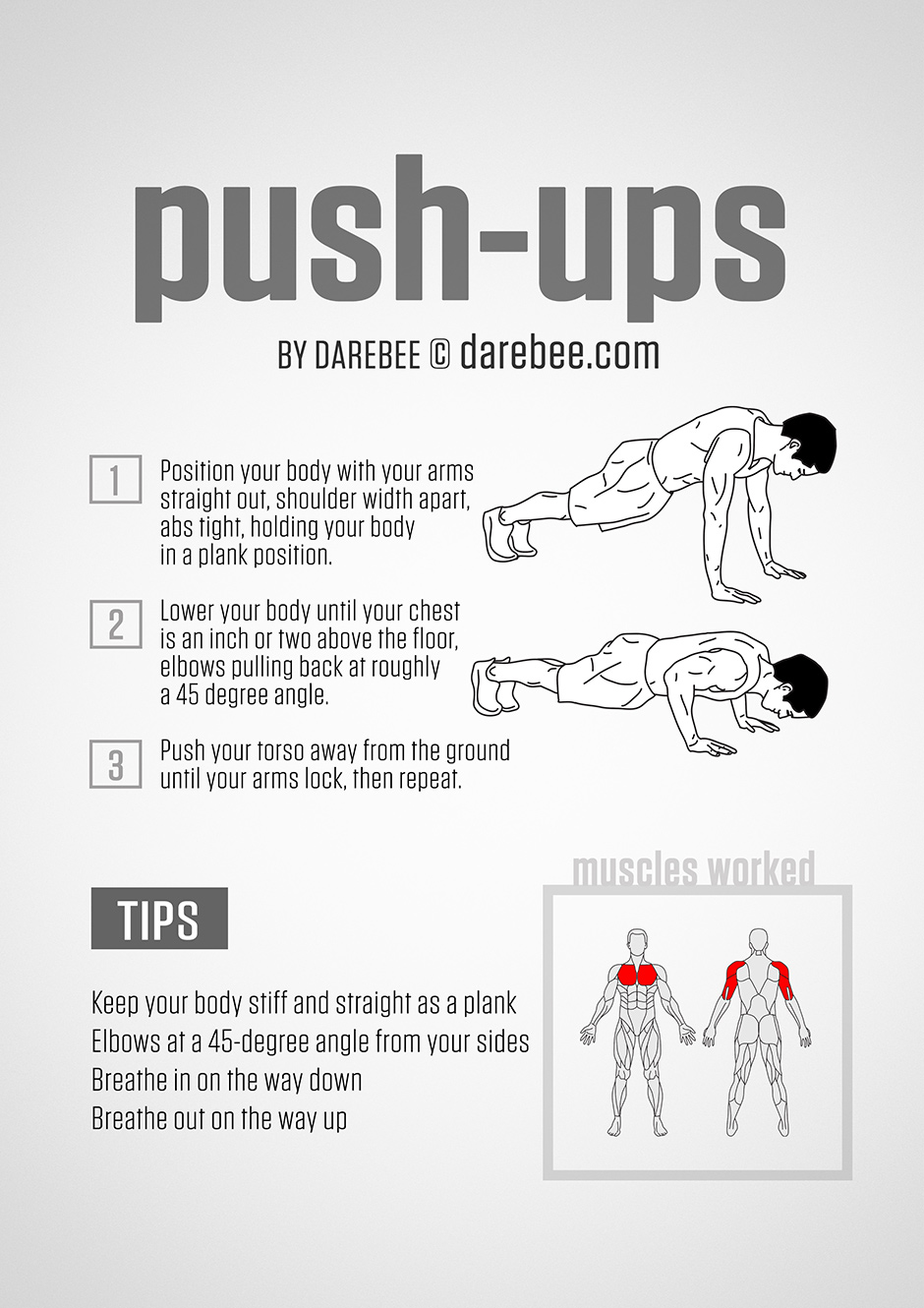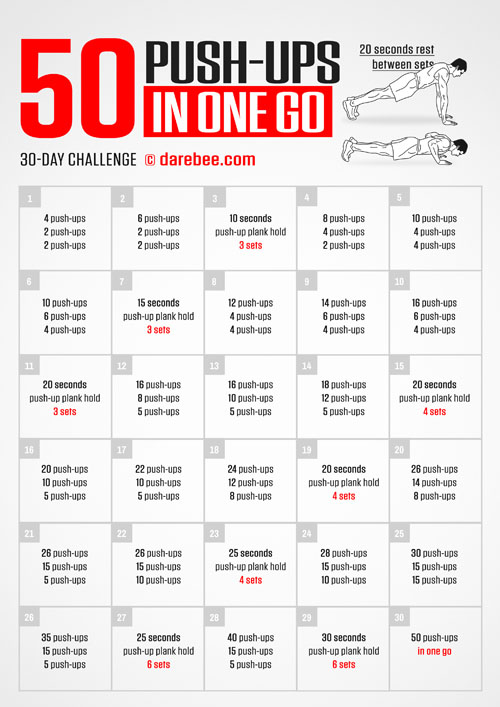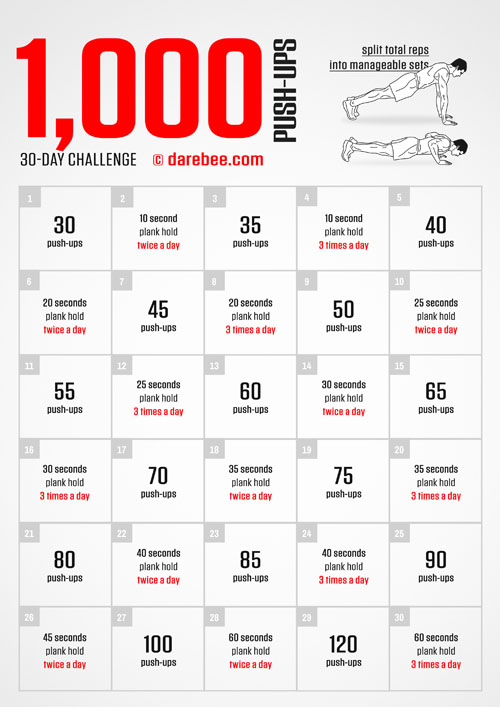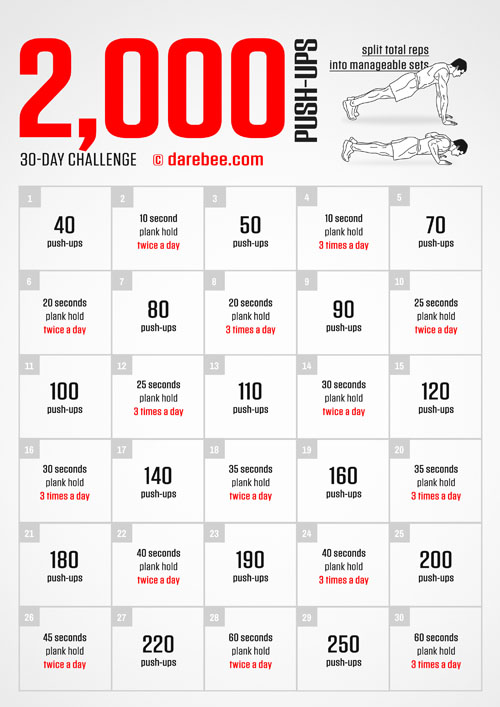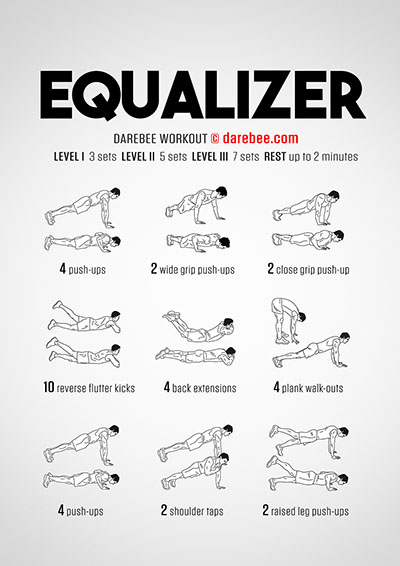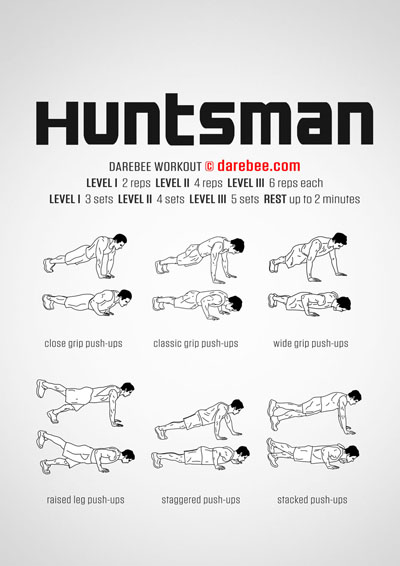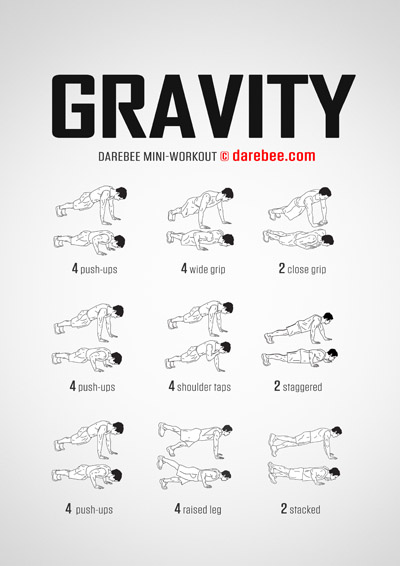Being able to do push-ups is a skill anyone can learn and perfect. Anyone can teach their body to defy gravity and perform X amount of consecutive push-ups - all it takes is regular work. Just like with any other bodyweight exercise it takes a while for our bodies to adjust to the movement and its requirements, memorize it and make it part of our routine. The good news - the body can do this fairly quickly, the bad news - it can forget it just as fast if you take too much of a break or stop doing them all together. With regular training, though, they can and will be conquered.
Our bodies are biological machines, they learn and adapt for what is required. Push-ups require you to have upper body strength, a powerful chest and triceps and a good core. That’s exactly what your body will concentrate on developing to deal with regular push-ups - as long as you keep on increasing the numbers and difficulty the moment it gets easier.
What they work
Push-ups work your arms (triceps and forearms), your chest, lower back, abs, quads and calves. They work the intercostal muscles covering your ribs and if you do enough of them and breathe in and out explosively as you do them they even work your lungs which means they become an aerobic exercise that also works your cardiovascular and aerobic systems.
Push-Up variations to try

Make the hard start, easier
In the beginning push-ups are hard. If you try to do a push-up and can’t, go on your knees and do a push-up that way. You work the same muscles but you place less weight on them. So with each one you simply become stronger.
Strength comes with repetition. The more you do, the stronger you get and the easier it all becomes.
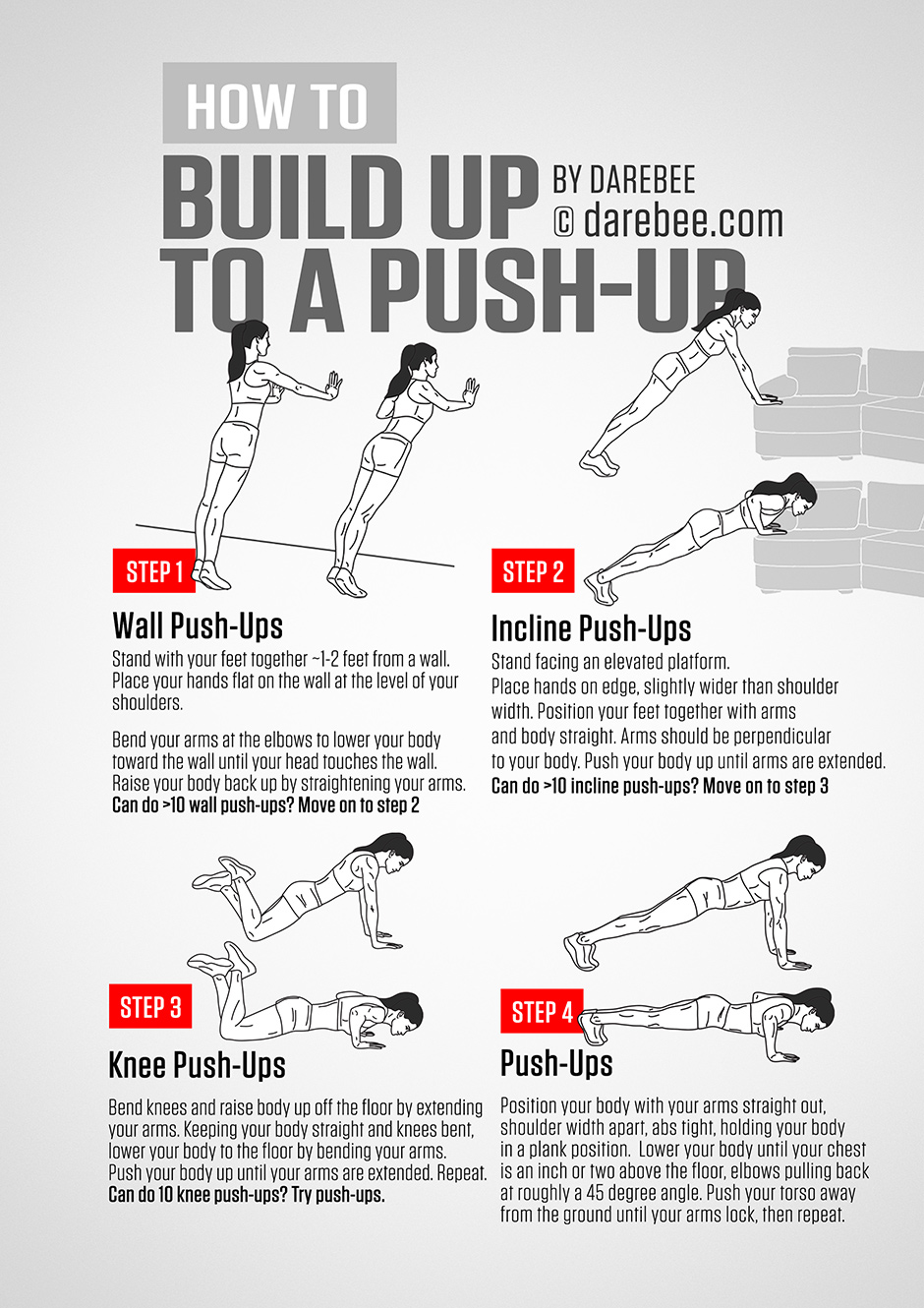
How To Do Push-Ups Every Day
The army uses push-ups to strengthen its recruits. Soldiers have to do push-ups every day as part of their training. To make push-ups part of your daily routine aim for a number you can do comfortably: ten, twelve, twenty or forty. Whatever you can do without exhausting your muscles. Make that number your daily number and get into the habit of performing push-ups at the same time each day (i.e. before you hit the shower in the morning, while waiting for the coffee maker to finish making coffee or just before you go to bed at night). If you do just five a day, for example, over the course of a month you will have done 150 push-ups. That's 1,800 push-ups in the year if you do not raise the number at any point. Just doing these will help make you stronger.
You can challenge yourself however by increasing the number of push-ups you do, each month, by a certain number. Here are some examples to help you:
Plus one: Increase the total number of push-ups you do, each day, by one. So if you start by doing five push-ups each day, on day one of the month you do five push-ups, on day two you do six, on day three seven and so on. At the end of the month you automatically reset by beginning again on day one of the next month with whatever your original starting number was the previous month (in our example, five).
Plus five: At the end of each month you increase the total of your daily push-ups routine by five. So, if you started on month one with five push-ups each day, when you start on month two you do ten push-ups each day.
Counting up: Increase the total number of push ups you do each day by the number of day in the month. Let's say you start off with doing five push-ups a day. On day one you do five push-ups (that's your ground zero and for you it's the only free pass). On day two you need to increase the number of push up by two (it's the second day of the month). On day three you increase the number of push-ups by three so now you will have to do eight. Keep on going until you reach the last day of the month where you will add that number to the starting number of push-ups you began with. Once you get to the end you can start again, next month with your comfortable number of push ups.
Counting Down: Counting down is the exact opposite of the Counting Up technique. This time you start off by taking the number of push-ups you can do easily and then on the first day of the month you perform that number plus as many extra push ups as there are days in the month. For example, suppose you can comfortably do just five push-ups and there are 31 days in the month. You start off by doing 5 + 31 = 36 push-ups. On day two you again do your five push ups but this time you add 30 extra ones: 5 + 30 = 35 on th eday day you do 34, then 33 and so on until on the last day of the month you do just five. This way each day becomes easier until a new month starts.
Up and Down: For this one start, again, with a number of push-ups you are comfortable with. Then on each day of the week add one. If your starting number is five push-ups, on Monday you five, on Tuesday you do six, on Wednesday you do seven and so on until you get to Sunday. Then when you get to the following Monday you reset everything again. You repeat things this way until you get to the end of the month.

The one-armed push-up technique
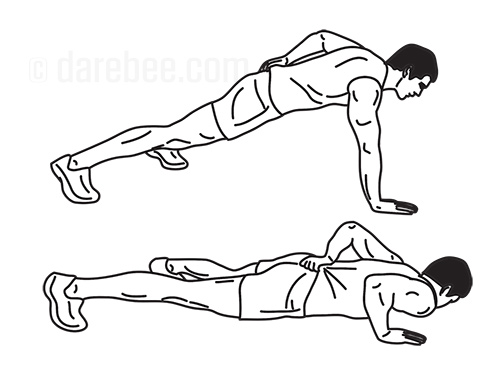
Funnily enough the one-armed push-up challenges your core more than it challenges your arms. Here’s how to do it:
Step 1. Have your feet apart, at least double your shoulder width but you can go wider if you want. That gives you stability. Make sure your hands are flat on the floor and in line with your shoulders. Keep your head down so you are looking down at the floor.
Step 2. Take one hand off the floor and hold it behind your back. Tense your core by pulling in your stomach. At this point you are in perfect balance. Your shoulders should be parallel to the floor, your body perfectly straight.
Step 3. Still looking at the floor exhale slowly and lower yourself towards it. Make sure you are maintaining your shoulder position so your shoulders are parallel to the floor at all times. Go as low as you can. Then, when you reach the lowest point you can, go back up again. With repetition your speed, depth and number of push-ups you can do will improve but the technique will never change.
Tip: Keep your abs tense and your core rigid as you perform this. Most people who fail to do a one-arm push-up do so because they do not keep their shoulders parallel to the floor. This creates an imbalance which increases the force that’s brought to bear on the standing arm and this makes the push-up way harder than it should be.

